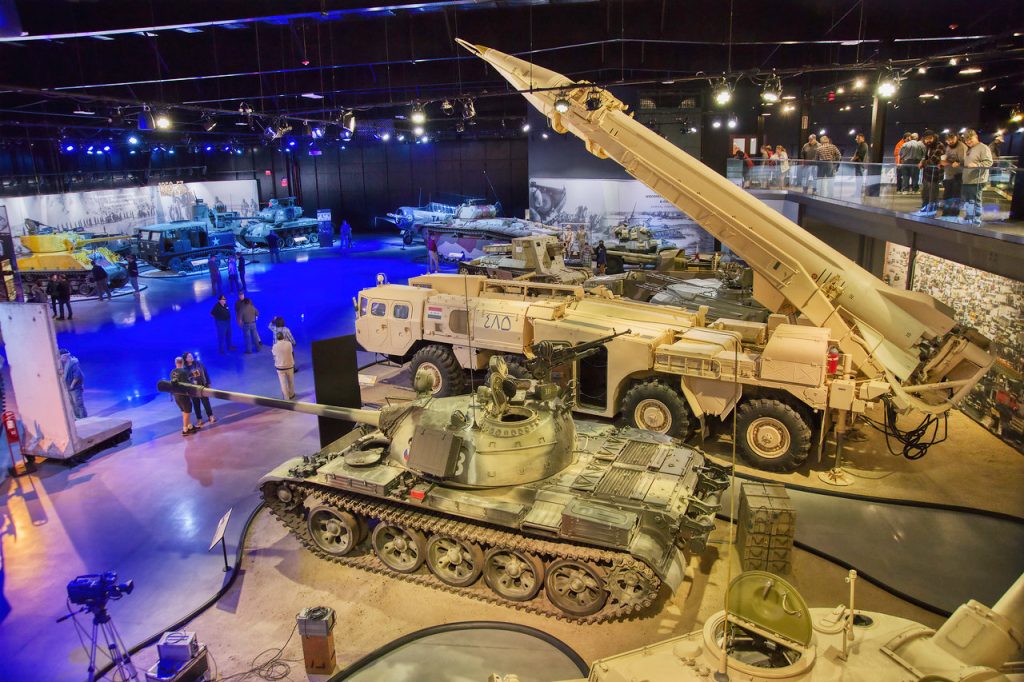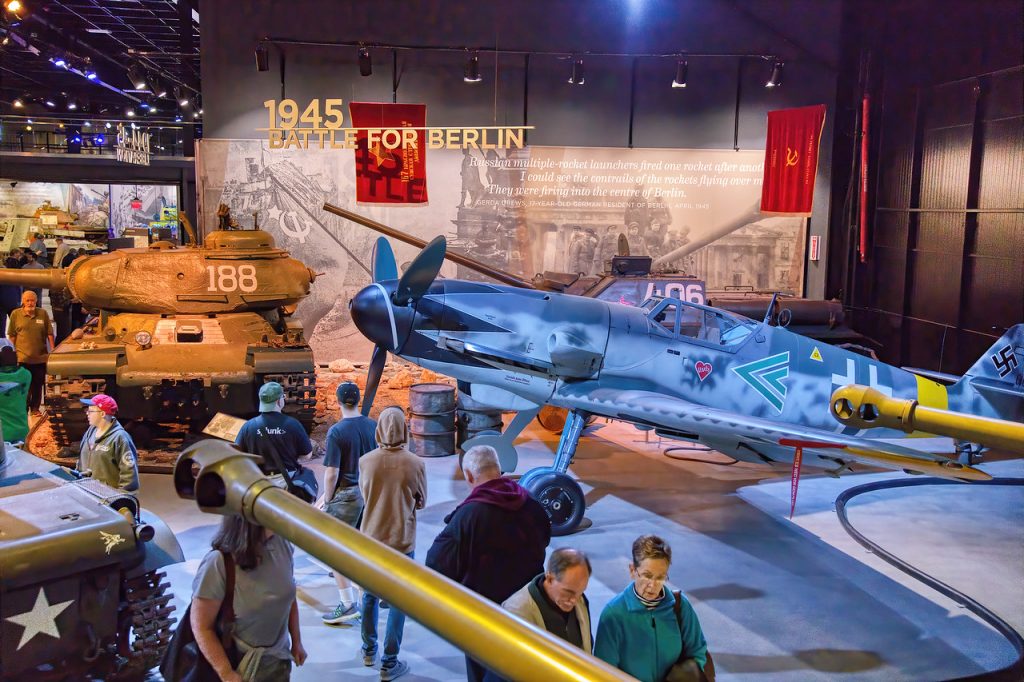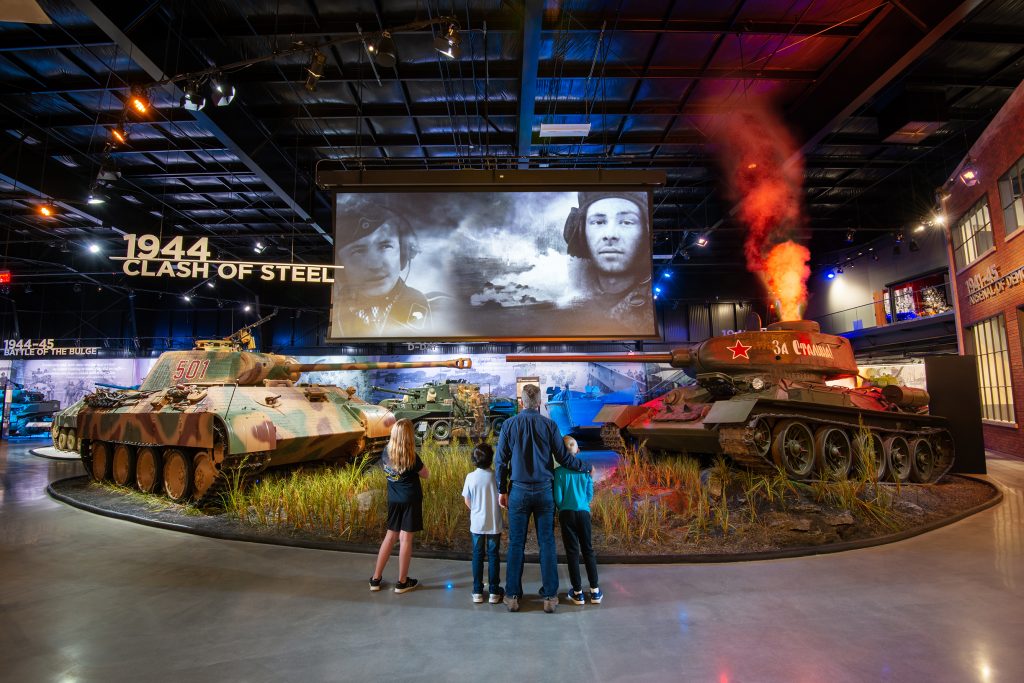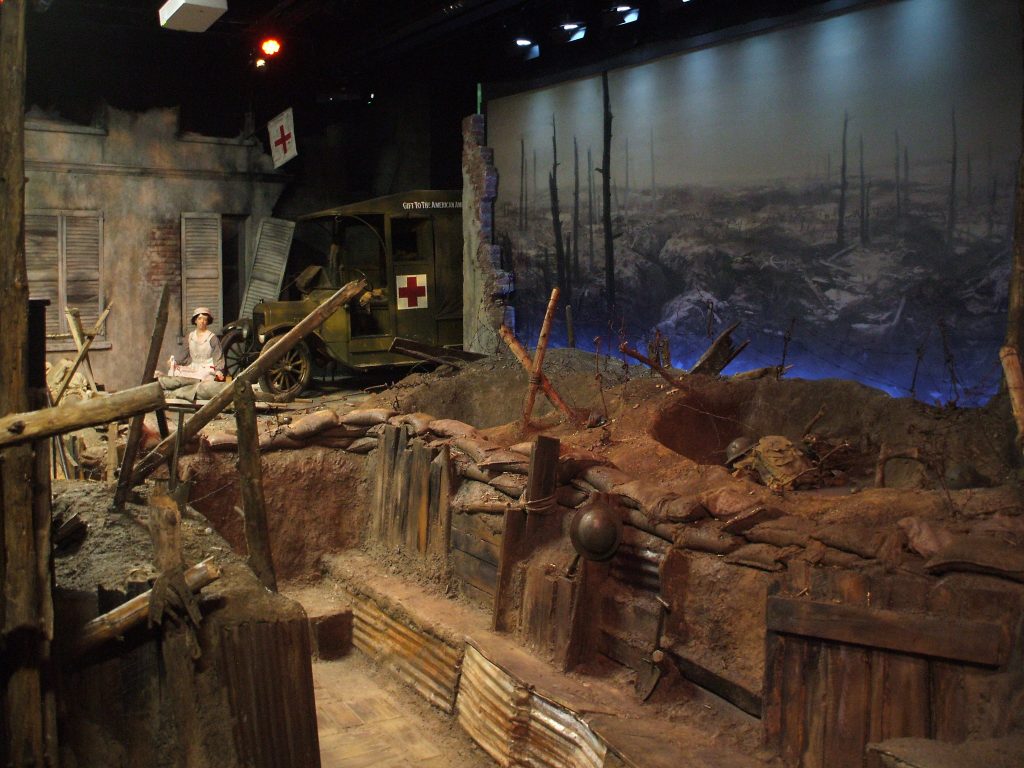
Victoriahope McAuliffe
The American Heritage Museum was created by the Collings Foundation in 2013, when the Foundation was gifted with Jacques Littlefield’s collection of tanks, armored trucks, and military artifacts. Located in Stowe on the grounds of the Collings Foundation’s headquarters, the American Heritage Museum is housed in a 65,000 + sq. ft. building. Hunter Chaney, Director of Marketing and Communications was able to share his experience as a seasoned Collings Foundation employee as well as his passion for the work of the American Heritage Museum and its mission.
Mr. Chaney has worked for the Collings Foundation for over a decade and shares a deep connection with their organization’s programming and the impact of the American Heritage Museum. Hunter shared, “I have been working with the Collings Foundation for 15 years, we are an extraordinary educational non-profit foundation that restores and exhibits some of the world’s most rare major historical artifacts. Since the early 80’s, our primary programs have focused on the restoration and operation of historic aircraft. When we received the world’s largest collection of tanks and armor from the late Jacques Littlefield in 2013, our trajectory changed. Working on developing and maintaining the American Heritage Museum has been one of the most interesting projects in my lifetime. The way the museum is laid out, the narrative and the jaw-dropping collection of tanks, armored vehicles and aircraft make this museum one-of-a-kind.”

“Massachusetts is the cradle of American history,” shared Mr. Chaney.
In his opinion, “To have the American Heritage Museum here in Central Massachusetts offers the public and schools a captivating glimpse into military and world history. We share the stories and legacies of our local and national veterans in a way that brings all of us closer to a sense of appreciation and understanding. There is a well-known saying: “Those who forget history are condemned to repeat it.” The American Heritage Museum serves as that reminder.”
When asked which exhibits he felt most passionate about, or considered to be most impactful, Mr. Chaney responded thoughtfully, “There are several exhibits within the American Heritage Museum that are truly moving. One of the most impactful is our WWI Trench Experience. This is the museum’s fully immersive exhibit. Moving from the Orientation Theater into the WWI Trench, you walk into the war-torn and dire landscape of WWI trench warfare along the eastern front in 1917. A scenario plays out where the viewer is transformed into a young soldier who must navigate through this dangerous place. It is a dynamic experience that brings you closer to understanding what WWI must have been like. The quality of media and design of this exhibit is world-class.”

If you visit the American Heritage Museum’s website, you will see vibrant pictures and expressive descriptions of interactive exhibits and opportunities to ride, and drive military tanks. The museum has done everything possible to create an atmosphere that ensures visitors leave with a newfound respect for American history, and those who fought to preserve the freedoms we enjoy thanks to their sacrifices.
Recently, we acknowledged the solemn anniversary of 9/11 and the bombing of the twin towers – it’s 20th anniversary. Those of us who are old enough, remember exactly where we were when each tower fell. For Millenials, it was the John F. Kennedy assassination of our generation.
Considering this information, I asked Mr. Chaney if the 20th anniversary impacted the museum’s drive to highlight that piece of America’s history, and the ongoing fight against terrorism? He shared that, “High school aged children who visit our 9/11 – War of Terror exhibit were not alive when we were attacked on September 11, 2001. In most cases, it is hard for them to relate to the attack itself or the long aftermath of events and war that ensued. Watching our video presentation on the 9/11 attacks and the pilots who were scrambled to intercept flight 93, then turn around and see a piece of twisted and mangled steel from one of the World Trade Center buildings, makes a lasting impression. So much of our society and the way our country operates have been molded around this one terrorist event. This compelling exhibit helps all of us better understand that fateful day and why it is so important to remember.”
For more information regarding the American Heritage Museum, you can visit their website www.americanheritagemuseum.org or contact Hunter Chaney at hchaney@collingsfoundation.com.

How do you feel the anniversary of 9/11 impacted the museum’s drive to highlight the history of America and now the ongoing fight against terrorism?
High school aged children who visit our 9/11 – War of Terror exhibit were not alive when we were attacked on September 11, 2001. In most cases, it is hard for them to relate to the attack itself or the long aftermath of events and war that ensued. Watching our video presentation on the 9/11 attacks and the pilots who were scrambled to intercept flight 93, then turn around and see a piece of twisted and mangled steel from one of the World Trade Center buildings, makes a lasting impression. So much of our society and the way our country operates have been molded around this one terrorist event. This compelling exhibit helps all of us better understand that fateful day and why it is so important to remember.




